The correct use of safety goggles
From left to right: Olpy Choose, Brun and Dunk, displaying various different styles of safety goggle wearage. The year is probably "the one we've all been longing for". The goggles themselves, judging by the opacity of the lenses and the hardness of the surrounding plastic, are probably about 10 years older. It would behove schools to realise that people will not protect themselves against the risk of chemicals splattered in their face if the protective equipment stops you seeing what you're doing with the chemicals in the first place.

My first car
I have a few photos of this car but most of them are shite. This is really the only one that has any kind of atmosphere. It depicts the car standing in a field near Halton-on-Lune in Lancashire, where a friendly farmer allowed me to camp. It is best viewed in a darkened room. Those of a sufficiently nerdish disposition with regard to old cars should be able to work out what kind of car it is; as a clue, I fitted it with the B20E engine used in its physically smaller but mechanically almost identical sporty stablemate. Those of a sufficiently nerdish disposition with regard to astronomy should be able to work out how long an exposure I used from the length of the star arc in the sky.
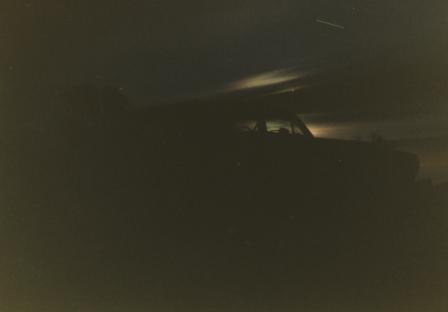
Gas flow in a two-stroke cylinder
I replaced the cylinder on my MZ because the thread for the exhaust retaining collar was buggered and I was fed up with the exhaust falling off. The replacement cylinder, unexpectedly, turned out to have had the ports enlarged, so I thought with glee that I'd come by a high performance cylinder. Once fitted to the bike, its deficiencies became apparent. To begin with, it was impossible to get it to idle, and it had a disturbing habit of deciding to suddenly rev its nuts off even with the throttle closed and the plug lead removed. This was traced to the transfer passages having been enlarged so much that they overlapped the edge of the crankcase and were open to atmosphere... Several rude words and some epoxy filler applied from the outside to block the holes later, it then ran reasonably well on the stand, but was gutless and kind of strangled on the road. On removing the head the reason became apparent. The transfer passages were not only enlarged to excess, but asymmetrically. One gave a good flow of mixture aimed at the back of the pot, the other gave a feeble flow in two streams heading more or less straight out. Where the flows from the two ports met, a vortex formed, entraining exhaust gases. The result of all this was a dire scavenging efficiency. Swirly black marks on the top of the piston told the grisly tale. Here we see the piston in the barrel, to show the alignment with the transfer ports. The inlet side of the barrel is uppermost. The piston is correctly aligned, but the arrow indicating the front is not perpendicular to the axis of the gudgeon pin.

DAA da DAAH! Da da daah...
In 1972 a crack farming unit was sent to prison by a military court for a crime they didn't commit. These men promptly escaped from a maximum security sheep pen to the Lake District's abandoned mine workings. Today, still wanted by the government, they survive as sheepshaggers of fortune. If you have a sheep, if no-one else can help, and if you can find them, maybe you can hire the S‑Team...
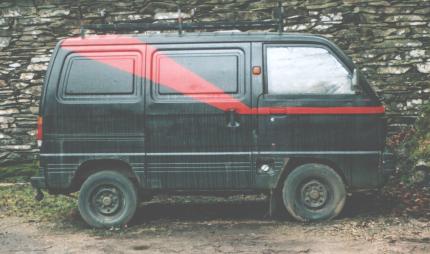
It Went Bang (part 1)
A long time ago, before cocktails, and skateboards, and John Travolta, someone had a brilliant idea. Which was that if you grind potassium permanganate into a fine powder, and mix it with finely powdered zinc and a little sulphur, in the correct stoichiometric ratio for complete combustion, then pack it into the end of a half-inch steel pipe with an electric igniter, you can just ignite it, and make explosions with it. Then when you've finished with it, you can keep the photos in a cupboard for twenty years, then put them on the internet for the next person to look at, completely free. It must have been before fascists as well. Here we see the results of about a teaspoonful of such a mixture being detonated in such a pipe. A further quantity was loosely packed into the empty tube of a felt pen to make a tracer round, which can be seen disappearing off to the right. Since it was a very poor fit in the steel pipe, it was not propelled with any great velocity.
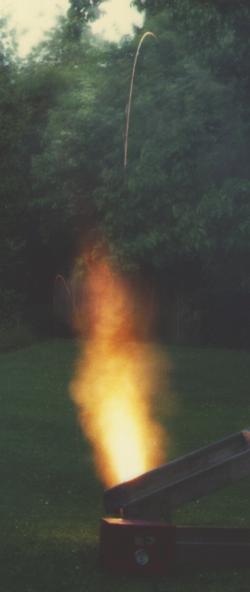
It Went Bang (part 2)
A better-fitting tracer round can be made from a pair of AA cells soldered end to end with a torch bulb soldered on top. In the bottom left hand corner we see the torch bulb sticking out of the end of the steel tube, glowing brightly. The more distant glow is the street lighting of an innocent provincial town which doesn't know that it is about to come under bombardment.
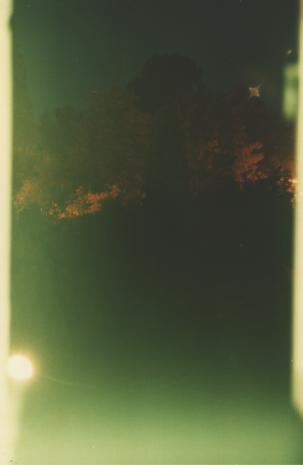
Detonation of the propellant charge produced an enormous muzzle flash and succeeded in launching the AA cells and attached bulb over about 300 yards. Remarkably, the bulb survived the shock well enough to register on the photograph as a squiggly line falling out of the sky which can be seen to the upper right of the muzzle flash if you look carefully.
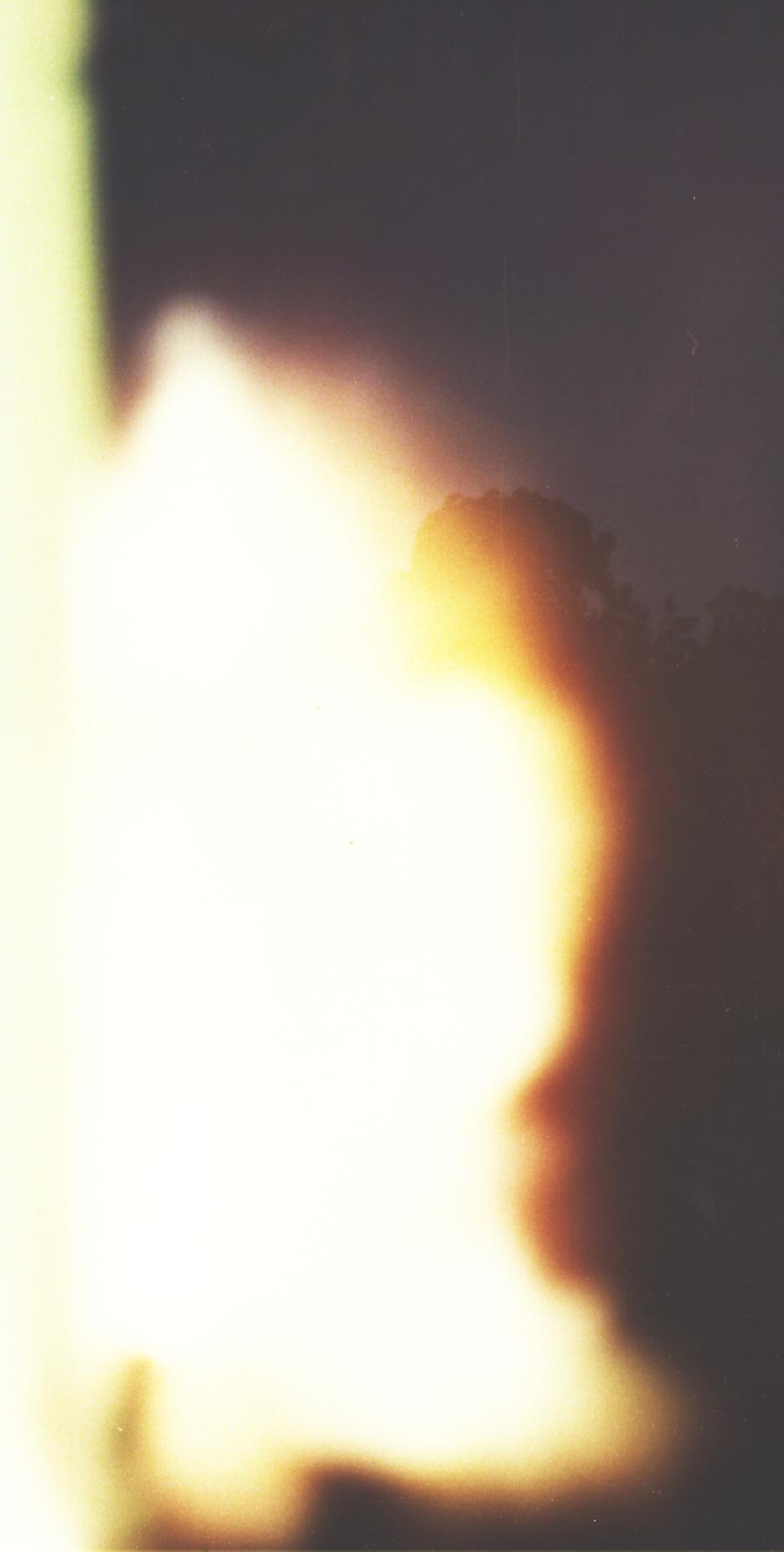
Back to pictures index
Be kind to pigeons